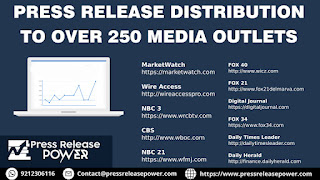Email A/B testing is a powerful method for optimizing your email campaigns. By comparing different versions of your emails, you can determine what resonates best with your audience. However, to make the most of A/B testing, it's crucial to track the right metrics. This article delves into the essential metrics to monitor during an email A/B test, helping you refine your email marketing strategy effectively.
Open Rate
Understanding Open Rate
The open rate is a fundamental metric in email A/B testing. It measures the percentage of recipients who open your email. This metric provides insight into how well your subject line and preheader text perform. A higher open rate indicates that your subject line is compelling and engaging to your audience.
Factors Affecting Open Rate
Several factors influence open rates, including the time of day your email is sent, the quality of your email list, and the relevance of your subject line. In A/B testing, you can experiment with different subject lines, sending times, and personalization strategies to identify what maximizes your open rate.
How to Analyze Open Rate
To accurately assess the effectiveness of your subject lines or sending strategies, compare the open rates of your A/B test variants. A significant difference between the open rates of the two versions indicates which approach is more appealing to your audience.
Click-Through Rate (CTR)
Understanding Click-Through Rate
Click-through rate (CTR) measures the percentage of recipients who click on a link within your email. This metric is crucial for evaluating the effectiveness of your email content and call-to-action (CTA). A higher CTR suggests that your content is engaging and your CTA is compelling.
Factors Affecting CTR
CTR can be influenced by the relevance and placement of your links, the design of your email, and the clarity of your CTA. During A/B testing, you can experiment with different content elements, link placements, and CTA designs to determine what drives the highest engagement.
How to Analyze CTR
When analyzing CTR, compare the performance of different email variants. A higher CTR in one version indicates that the content or CTA is more effective. Use this information to refine your email content and design strategies.
Conversion Rate
Understanding Conversion Rate
The conversion rate measures the percentage of recipients who take a desired action after clicking through your email. This action could be making a purchase, signing up for a webinar, or downloading a resource. Tracking conversion rate helps you assess the overall effectiveness of your email campaign in achieving its goals.
Factors Affecting Conversion Rate
Several factors can impact conversion rates, including the relevance of your offer, the landing page experience, and the ease of completing the desired action. In A/B testing, you can experiment with different offers, landing page designs, and user flows to identify what drives the highest conversions.
How to Analyze Conversion Rate
To evaluate conversion rates, compare the performance of your A/B test variants based on the desired action. A higher conversion rate in one version indicates that the offer or landing page is more effective at persuading recipients to take action.
Bounce Rate
Understanding Bounce Rate
Bounce rate measures the percentage of emails that were not successfully delivered to recipients' inboxes. Bounces can be categorized into two types: soft bounces (temporary delivery issues) and hard bounces (permanent delivery issues). Monitoring bounce rate helps ensure that your email list is clean and your emails are reaching your audience.
Factors Affecting Bounce Rate
Several factors can influence bounce rates, including invalid email addresses, full mailboxes, or issues with the email server. During A/B testing, maintaining a low bounce rate is crucial for accurate results and effective email delivery.
How to Analyze Bounce Rate
Analyze bounce rates by comparing the rates between different A/B test variants. A significant difference in bounce rates may indicate issues with the email list or delivery settings. Regularly clean and update your email list to minimize bounce rates.
Unsubscribe Rate
Understanding Unsubscribe Rate
Unsubscribe rate measures the percentage of recipients who opt-out of receiving future emails. This metric provides insight into how your audience perceives your content and overall email experience. A high unsubscribe rate may indicate that your emails are not meeting recipient expectations.
Factors Affecting Unsubscribe Rate
The unsubscribe rate can be influenced by the frequency of emails, the relevance of content, and the quality of your email design. During A/B testing, experiment with different content strategies and email frequencies to identify what reduces unsubscribe rates.
How to Analyze Unsubscribe Rate
Compare the unsubscribe rates of your A/B test variants to determine which version has a lower rate. A lower unsubscribe rate suggests that the content or frequency of the email is more aligned with recipient preferences.
Engagement Rate
Understanding Engagement Rate
Engagement rate measures the level of interaction recipients have with your email, including clicks, replies, and forwards. This metric helps gauge overall recipient interest and engagement with your email content.
Factors Affecting Engagement Rate
Engagement rates can be influenced by the relevance of your content, the clarity of your CTA, and the personalization of your emails. In A/B testing, experiment with different content elements and personalization strategies to enhance engagement.
How to Analyze Engagement Rate
Evaluate engagement rates by comparing interactions with different email variants. A higher engagement rate indicates that the content and CTA are more effective in prompting recipient interactions.
Revenue Per Email
Understanding Revenue Per Email
Revenue per email measures the amount of revenue generated for each email sent. This metric is crucial for assessing the financial impact of your email campaigns. Tracking revenue per email helps determine the return on investment (ROI) of your email marketing efforts.
Factors Affecting Revenue Per Email
Revenue per email can be influenced by factors such as the relevance of your offers, the timing of your emails, and the effectiveness of your CTAs. During A/B testing, experiment with different offers and email timings to optimize revenue per email.
How to Analyze Revenue Per Email
Compare revenue per email across different A/B test variants to identify which version generates the highest revenue. Use this information to refine your offers and email strategies for better financial performance.
Delivery Rate
Understanding Delivery Rate
Delivery rate measures the percentage of emails that successfully reach recipients' inboxes. It is an important metric for ensuring that your emails are not being marked as spam or blocked by email servers.
Factors Affecting Delivery Rate
Delivery rates can be influenced by factors such as sender reputation, email content, and recipient engagement. In A/B testing, monitor delivery rates to ensure that your emails are being delivered effectively.
How to Analyze Delivery Rate
Analyze delivery rates by comparing the rates of different A/B test variants. A significant difference in delivery rates may indicate issues with email content or sender reputation. Maintain a good sender reputation and optimize email content to improve delivery rates.
FAQ
What is an email A/B test?
An email A/B test involves sending two or more variations of an email to different segments of your audience to determine which version performs better. It helps identify the most effective elements of your email campaign.
Why is open rate important in email A/B testing?
Open rate measures how many recipients open your email. It helps evaluate the effectiveness of your subject line and preheader text. A higher open rate indicates that your subject line is engaging and relevant.
How can I improve my click-through rate (CTR)?
To improve CTR, experiment with different content elements, link placements, and CTA designs. Ensure that your content is relevant and your CTA is clear and compelling.
What should I do if my bounce rate is high?
If your bounce rate is high, review and clean your email list to remove invalid email addresses. Ensure that your email server settings are properly configured to reduce bounce rates.
How can I reduce my unsubscribe rate?
To reduce unsubscribe rates, focus on delivering relevant and valuable content. Adjust email frequency and ensure that your email design is appealing and easy to read.
What is the significance of revenue per email?
Revenue per email measures the financial impact of your email campaigns. It helps assess the ROI of your email marketing efforts and optimize your offers and strategies for better financial performance.
By tracking these key metrics in your email A/B tests, you can gain valuable insights into your audience's preferences and improve the effectiveness of your email campaigns. Implementing data-driven strategies based on these metrics will help you achieve better results and maximize the impact of your email marketing efforts.
Get in Touch
Website – https://www.webinfomatrix.com
Mobile - +91 9212306116
Whatsapp – https://call.whatsapp.com/voice/9rqVJyqSNMhpdFkKPZGYKj
Skype – shalabh.mishra
Telegram – shalabhmishra
Email -info@webinfomatrix.com

.jpg)
.jpg)






 English (US) ·
English (US) ·